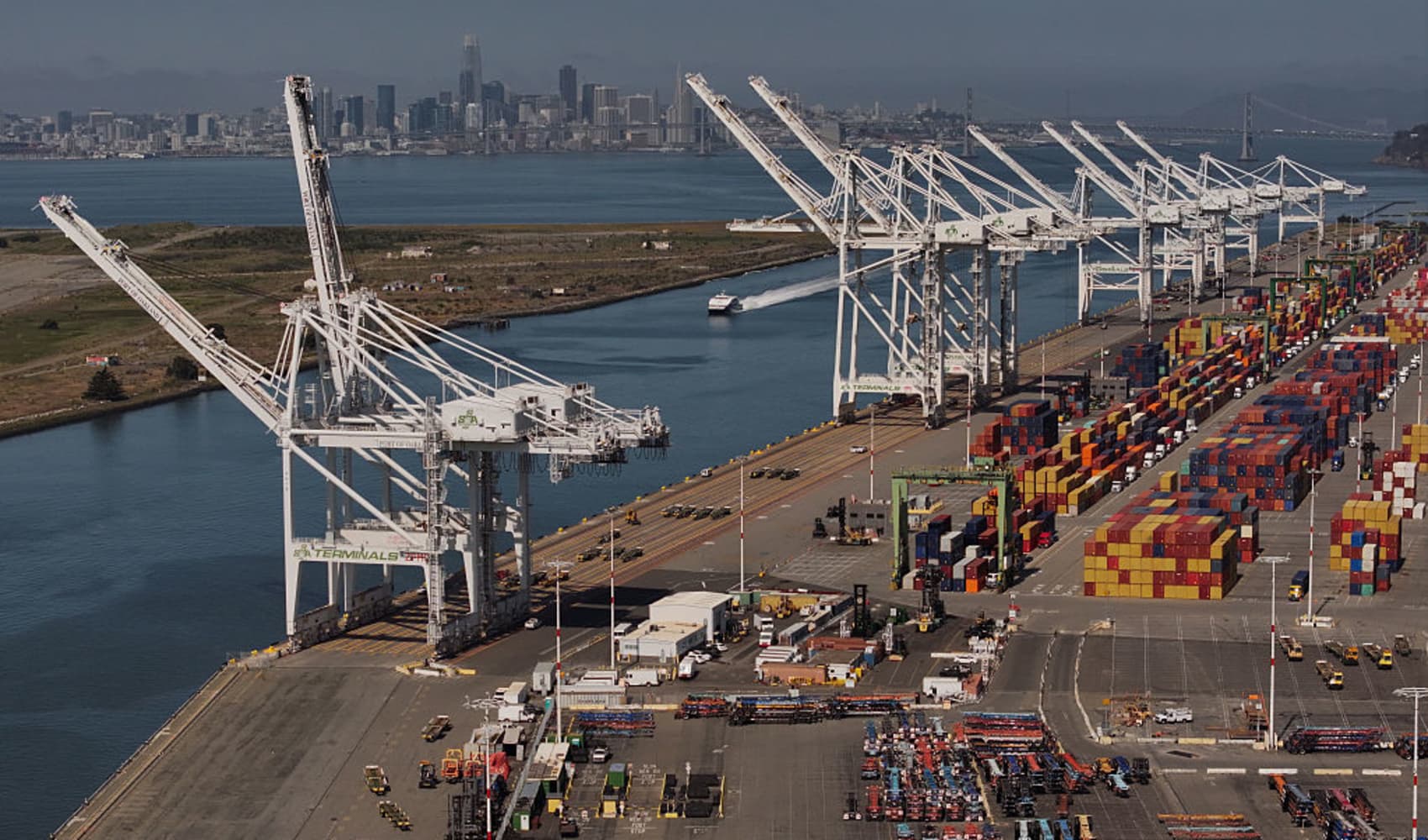Tariff Windfall: $16B Cuts Deficit! What It Means
Tariff Windfall: Record $16 Billion Cuts Budget Deficit!
Introduction: A Surprise Boost to the Economy?
Ever feel like the economy is a giant rollercoaster? One minute you're soaring, the next you're plummeting. Well, April brought a surprising climb – a record-breaking surge in tariff receipts! We're talking about a hefty $16.3 billion, a number that's not just impressive; it's actually helping to chip away at the national budget deficit. But how did this happen, and what does it all mean for you? Let's dive in and explore this unexpected economic turn.
The Numbers Don't Lie: A Deep Dive into Tariff Receipts
Okay, let's break down the raw data. According to recent reports, customs duties in April reached a staggering $16.3 billion. That's an 86% jump compared to the $8.75 billion collected in March! And if you compare it to the $7.1 billion collected a year ago, it's more than double! It's like finding a forgotten wad of cash in your old winter coat – a welcome surprise, to say the least.
March vs. April: Understanding the Spiking Numbers
What triggered such a dramatic increase in just one month? A few factors could be at play. Were there new tariffs implemented? Did imports surge? Understanding the reasons behind this spike is crucial to predicting whether this trend will continue.
Year-Over-Year Comparison: A Broader Perspective
Looking back at the previous year, we can see that tariff revenue has more than doubled. This begs the question: Is this a short-term anomaly or a sign of a long-term shift in trade dynamics?
The Budget Deficit: A Sliver of Good News
Now, here's the kicker: this unexpected influx of tariff revenue is actually helping to reduce the national budget deficit. As of now, the fiscal year-to-date deficit stands at $1.05 trillion. While that's still a massive number, it's important to remember that every little bit helps. This record tariff revenue is like adding water to a leaky bucket – it might not solve the problem entirely, but it definitely makes a difference.
Deficit Still Higher Than Last Year: Context is Key
Despite the boost from tariffs, the deficit is still 13% higher than it was a year ago. This reminds us that while the tariff revenue is a positive development, it's just one piece of a much larger and more complex economic puzzle.
The Impact on Consumers: Are We Paying the Price?
Let's be honest, tariffs aren't exactly a free lunch. They're essentially taxes on imported goods, and guess who often ends up footing the bill? You guessed it – consumers. When tariffs increase the cost of imported products, businesses may pass those costs onto consumers in the form of higher prices.
Analyzing Price Increases: Are Everyday Goods Affected?
It's worth investigating whether the surge in tariff revenue has coincided with an increase in the prices of common household goods. Are our groceries getting more expensive? Are electronics costing more? These are crucial questions to consider.
The Debate on Who Pays: Importers vs. Consumers
There's an ongoing debate about who truly bears the burden of tariffs. Some argue that importers absorb the costs, while others believe that consumers ultimately pay the price. The reality is likely a combination of both, depending on the specific products and markets involved.
Geopolitical Implications: Trade Wars and Global Relations
Tariffs don't exist in a vacuum. They're often used as leverage in international trade negotiations and can have significant geopolitical consequences. Think of tariffs as chess pieces on a global economic chessboard. Every move can trigger a chain reaction, impacting relationships between countries and potentially escalating into trade wars.
Trade Negotiations and Tariff Strategies
Governments often use tariffs as a tool to pressure other countries into making concessions on trade agreements. This can lead to complex negotiations and sometimes even retaliatory tariffs, creating a cycle of escalating trade tensions.
The Role of China and Other Major Trading Partners
The United States' trade relationship with China is particularly relevant in the context of tariffs. Tariffs imposed on Chinese goods have been a major point of contention in recent years, and any changes in tariff policies could have significant implications for both economies.
Sustainability of Tariff Revenue: Can We Rely on This?
The big question now is: can we expect this surge in tariff revenue to continue? Is this a temporary windfall or a sustainable source of government funding? Relying too heavily on tariffs could be like building a house on sand – it might seem solid at first, but it could crumble under pressure.
Factors Influencing Future Tariff Collections
Several factors could influence future tariff collections, including changes in trade policies, fluctuations in import volumes, and global economic conditions. Predicting future tariff revenue is a challenging task, as it's subject to a wide range of variables.
Diversifying Revenue Streams: A More Sustainable Approach
Instead of relying solely on tariffs, governments should focus on diversifying revenue streams to create a more stable and resilient economy. This could involve investing in infrastructure, education, and other initiatives that promote long-term economic growth.
The Broader Economic Picture: What Does This Mean for the Future?
While the record tariff revenue is undoubtedly a positive development, it's essential to view it within the context of the broader economic landscape. One piece of good news doesn't automatically solve all of our economic challenges.
Impact on GDP Growth
The increase in tariff revenue could have a positive impact on GDP growth, as it contributes to government revenue and potentially allows for increased spending on public services and infrastructure. However, the impact on GDP is complex and depends on how the revenue is used.
The Future of Trade: Navigating a Changing Global Landscape
The global trade landscape is constantly evolving, and governments must adapt their policies to remain competitive. This could involve pursuing new trade agreements, investing in innovation, and promoting workforce development.
Conclusion: A Cautious Optimism
So, there you have it: tariff receipts topped $16 billion in April, providing a welcome boost to the national budget deficit. While this is undoubtedly good news, it's crucial to maintain a balanced perspective. The deficit remains high, the impact on consumers needs careful monitoring, and the long-term sustainability of relying on tariffs is questionable. However, this unexpected surge in revenue offers a glimmer of hope and a reminder that even in uncertain economic times, there can be positive surprises.
Frequently Asked Questions
- What exactly are tariffs, and how do they work?
Tariffs are taxes imposed on imported goods. When a product crosses a border into a country imposing a tariff, the importer pays the tax to the government. This increases the cost of the imported goods, making them more expensive for consumers.
- How does increased tariff revenue help reduce the budget deficit?
When the government collects more revenue from tariffs, it has more funds available to cover its expenses. This additional revenue can help offset government spending, thereby reducing the budget deficit, which is the difference between government spending and revenue.
- Who ultimately pays for tariffs – the importers or the consumers?
The burden of tariffs is often shared between importers and consumers. Importers may absorb some of the cost by reducing their profit margins, but they often pass a portion of the cost onto consumers in the form of higher prices.
- Are tariffs always a bad thing for the economy?
Tariffs can have both positive and negative effects on the economy. While they can protect domestic industries and generate revenue for the government, they can also increase prices for consumers, disrupt global trade, and lead to retaliatory tariffs from other countries.
- What are some alternative ways to reduce the budget deficit besides relying on tariff revenue?
There are many ways to reduce the budget deficit, including cutting government spending, increasing other forms of taxation (like income tax or sales tax), and promoting economic growth through investments in education, infrastructure, and innovation.

